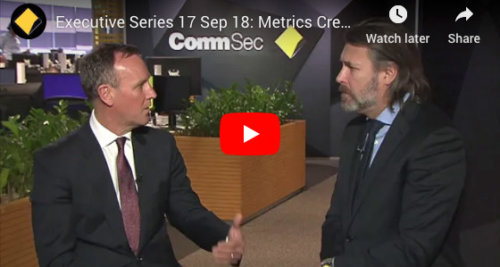Australian property loan market outlook for 2020, Metrics report

Metrics anticipate the Australian commercial property loan market outlook for 2020.
Non-bank lender activity in the Australia property loan market is forecast to expand further in 2020, driven by increased interest from both developers as well as investors
The Australian non-bank loan market has been an essential source of funding for Australian property developers and investors for decades, but when compared to more developed markets such as the US and Europe, it still has significant potential for expansion.
There are currently a number of structural and cyclical trends playing out in the market that will see it grow in the coming years, notes the nation’s leading non-bank lender Metrics Credit Partners (Metrics).
NON-BANK LENDERS TO PROVIDE A GREATER SHARE
One of the hallmarks of the Australian corporate lending market has been the bank dominance of the sector, with the domestic banks currently holding around 70% market share. Due to the large balance sheet capacity and accompanying capital required to operate in the market, barriers to entry are significant.
However, “banks are under significant regulatory pressure to reign in their loan portfolios to meet stricter capital requirements, which has opened up opportunities for non-bank lenders to claim a greater share of the >$900 billion market.” notes managing partner at Metrics, Andrew Lockhart.
“For this reason, expect the proportion of non-bank lenders to grow modestly over the coming year.”
Mr Lockhart adds that institutional capital is also driving this corporate loan growth. “The asset class is a key component in institutional portfolios, particularly for those seeking income-producing assets at a time of low yields, and over 80 per cent of managers expect to raise more capital from pension funds and insurance companies in the near future.
“Outside of the institutions, however, there is also significant interest in investing in corporate loans from Australian retail and self-managed superfund investors, drawn by the attractive risk-adjusted returns of four to ten per cent on offer.”
Given continued uncertainty for equities markets resulting from geopolitical issues and the ‘lower for longer’ rate environment impacting cash and term deposits, this is a trend expected to continue into 2020.
Mr Lockhart notes that raising capital for property developments can be a long and expensive process. “The property sector is an attractive opportunity to build a relationship with a lender, rather than relying on commoditised lending products offered by the banks.
“Given the pullback in bank funding in Australia, along with the appetite we are seeing from borrowers of all sizes for alternative sources of funding, we could well see more sizeable transactions in the Australian market in the years to come.”
Property Observer – 20 JANUARY 2020
Other News
Research Paper: Six Trends for Private Credit in 2026
Metrics Credit Partners has released its latest research paper, Six Trends for Private Credit in 2026, exploring the opportunities and challenges…
Metrics Innovate Reconciliation Action Plan
We are proud to share our second Reconciliation Action Plan (RAP), reaffirming our commitment to truth, healing and unity. We…
INSIGHTS
MCP Income Opportunities Trust (MOT) lists on ASX
Sydney, 29 April 2019: The Trust Company (RE Services) Limited (ABN 45 003 278 831) (Responsible Entity) is the responsible…
MCP Master Income Trust wins Lonsec Listed Fund Award
The award came a year after MXT was listed on the Australian Securities Exchange






